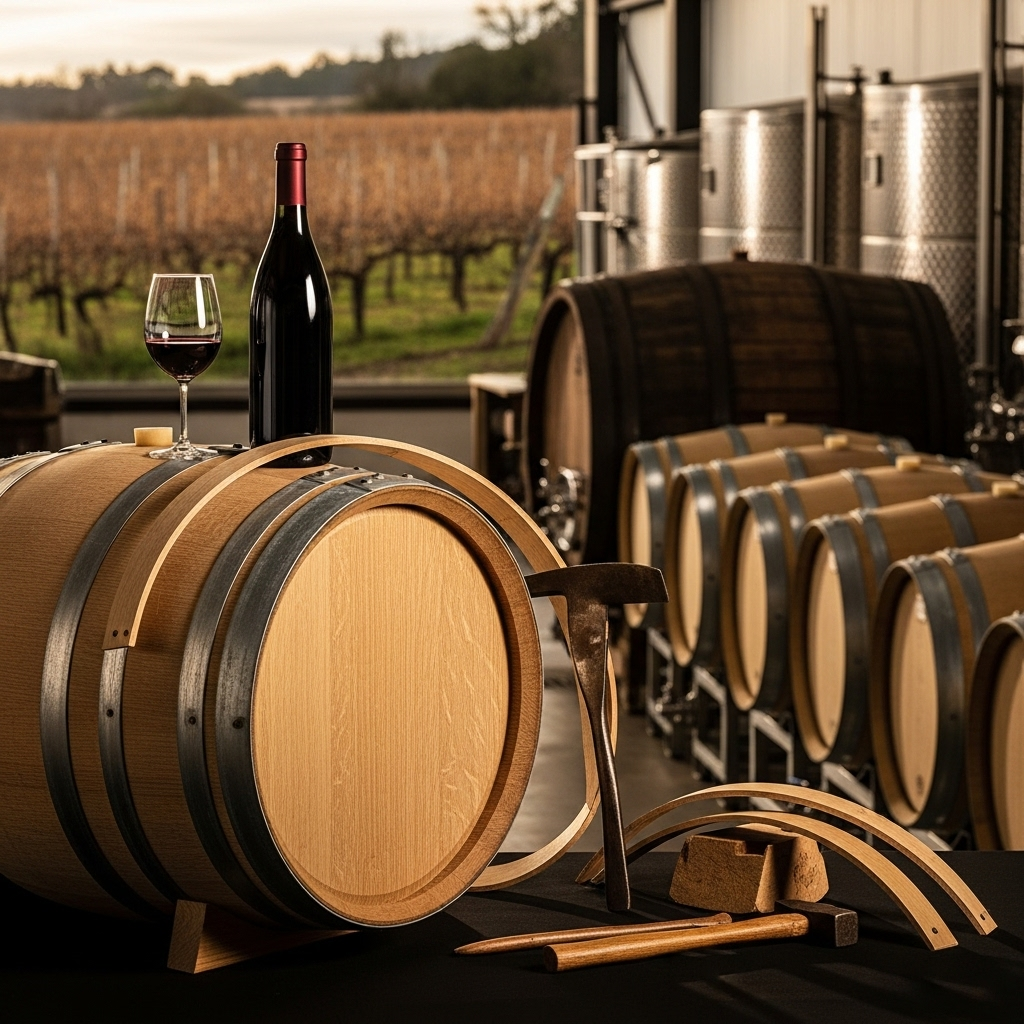
Barrels: a Tradition of Winemaking Eloquence
Share
The Craftsmanship Behind Barrels: An Art Form in Winemaking
The craftsmanship behind barrels is an intricate dance of tradition and innovation, where each element plays a crucial role in shaping the character of the wine. Master coopers, who have honed their skills over years or even decades, select specific types of wood—primarily oak—for their unique flavor profiles and aging qualities. The toasting process, where the inside of the barrel is charred to varying degrees, further enhances the wine, imparting notes of vanilla, caramel, and spice. This delicate balance of fire and wood transforms the raw materials into vessels that not only hold the wine but also interact with it, allowing for a slow exchange of oxygen that softens tannins and develops complexity.
As the wine matures, it absorbs the subtle nuances from the barrel, creating a symphony of flavors that reflect both the terroir and the craftsmanship involved. Each barrel tells a story, a testament to the artistry of the cooper and the winemaker, ultimately culminating in a product that embodies the essence of time, place, and skill.
The Role of Barrels in Shaping Wine Flavors and Aromas
Barrels play a pivotal role in the alchemy of winemaking, acting as both a vessel for fermentation and a catalyst for flavor development. The wood, often oak, imparts a complex array of flavors ranging from vanilla and spice to toasted nuts and caramel, which evolve over time as the wine interacts with the barrel's porous structure. This interaction allows for micro-oxygenation, a process that softens tannins and enhances the wine’s overall mouthfeel, creating a more harmonious profile.
The choice of barrel—its age, origin, and toasting level—further influences the final product. New barrels contribute more intense flavors, while used barrels offer subtler nuances, allowing the fruit character to shine through. Additionally, the size of the barrel can affect the surface area-to-volume ratio, influencing how much wine comes into contact with the wood. Thus, the careful selection and management of barrels are essential for winemakers aiming to craft a wine that is not only expressive of its terroir but also rich in complexity and depth.
Innovations and Sustainability: The Future of Barrel-Aging in Winemaking
As the wine industry evolves, so too does the approach to barrel-aging, with innovations that marry tradition with sustainability. Winemakers are increasingly turning to alternative materials, such as ceramic and concrete, which not only reduce reliance on timber but also impart unique flavors to the wine. These materials can offer a more controlled environment for fermentation and aging, allowing for greater expression of terroir while minimizing environmental impact. Additionally, advancements in technology have led to the development of eco-friendly barrel production methods. For instance, some cooperages are now employing sustainable forestry practices, ensuring that the oak used in barrels is sourced responsibly. This shift not only preserves forest ecosystems but also aligns with the growing consumer demand for environmentally conscious products. As these innovations take root, they pave the way for a future where the art of barrel-aging is not just about tradition, but also about fostering a harmonious relationship with the planet.
